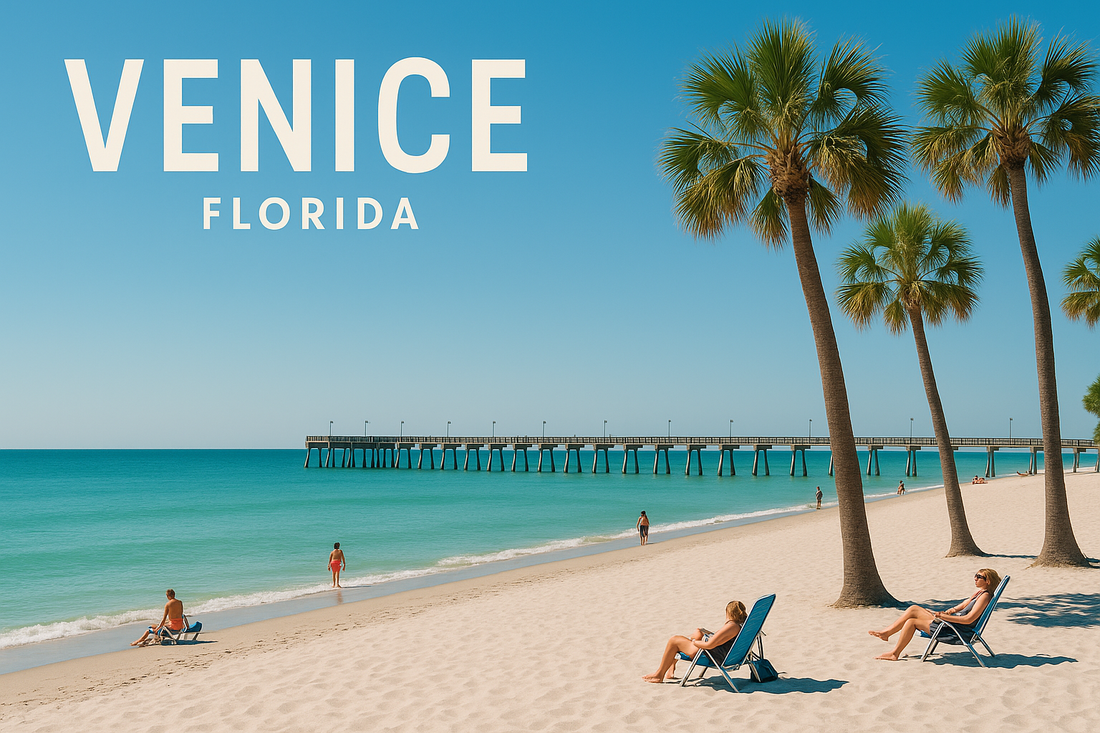
Why Venice, Florida Has So Many Shark Teeth
Venice is nicknamed the “Shark Tooth Capital of the World”—for reasons written in the sand.
Walk the beach or snorkel just offshore and you’ll spot the glossy triangle of a fossil tooth among shell and sun. But why does this coast yield so many prehistoric treasures?
🌊 An Ancient Ocean Highway
During the Miocene and Pliocene epochs (about 23–2.5 million years ago), much of Florida lay under a warm, shallow sea rich with marine life. Those nursery waters set the stage for today’s beach discoveries.
🦈 Prehistoric Shark Paradise
From reef-dwellers to giants like megalodon (over 50 feet long), sharks patrolled these seas. Sharks shed thousands of teeth over a lifetime, continuously replacing old with new. Over millions of years, those teeth settled into ancient seabeds—Venice’s fossil foundation.
⚡ Fossilization Beneath the Waves
Teeth that were quickly buried in sediment and bathed in mineral-rich groundwater became fossils as original material was replaced by hard minerals (often phosphate).
🏛️ Natural Vault
Deposits like the Peace River Formation acted as a vault, storing teeth for ages.
🦴 Mixed Treasures
Layers can also hold shells, vertebrate bones—even Ice Age mammals in places.
🏖️ Venice’s Unique Geology
Florida’s Gulf shelf is unusually wide and flat. Near Venice, steady wave action and erosion liberate fossil teeth from old deposits and deliver them to modern beaches.
🌊 Nature’s Conveyor Belt
Ancient shark nurseries + fossil-rich sediments + modern coastal erosion = a perfect recipe. Each tide acts like a conveyor belt, revealing new teeth. Offshore, divers visit gravelly “fossil ledges” where currents expose layer upon layer of prehistory.
🔍 Hunting for Shark Teeth Today
Collectors of all ages roam Caspersen and Venice Beach with sifters, or join guided trips to deeper deposits.
🦈 Common Finds
- Tiger shark
- Bull shark
- Lemon shark
- Sand tiger
🏆 Ultimate Prize
- Megalodon teeth
- Dark gray to jet black
- Large triangular crowns
- Up to 6+ inches
🎯 Best Spots
- Caspersen Beach
- Venice Beach
- Offshore ledges
- After storms
💡 Collecting Tip: Always follow ethical collecting practices and local regulations.
⏳ More Than Souvenirs—Pieces of History
Every tooth is a chapter: oceans that once covered Florida, predators that shaped ecosystems, and the slow passage of deep time. Holding one is holding a memory that survived the tides.
🌟 Transform Your Discovery
Found a great tooth in Venice? Turn it into custom fossil jewelry— or browse our fossil jewelry collection to keep the story close.
❓ Frequently Asked Questions About Venice Shark Teeth
Where are the best spots?
Caspersen Beach (especially the south end) and Venice Beach south of the jetty. For bigger finds, consider guided trips to offshore fossil ledges.
When should I go?
Low tide is best, especially after storms. Early morning (6–9 AM) helps beat crowds. Winter often produces more churned material.
What simple tools help?
A sand sifter or mesh basket, small scoop, and a collection bag. Knee pads help for long sessions. Bring sun protection and water.
How do I ID common species?
Check size, crown shape, and serrations. Megalodon: large triangular with coarse serrations. Tiger: curved with jagged edges. Bull: broad triangle, fine serrations. Mako: narrow, smooth edge.
Is collecting legal on Venice beaches?
Yes, on public beaches. Always respect private property and posted rules, and stay aware of tides and weather.
🦈 Ready to Wear Your Fossil Discovery?
Turn your Venice finds into a keepsake—or choose a handcrafted piece that captures the thrill of the hunt.
Shop Fossil Jewelry →